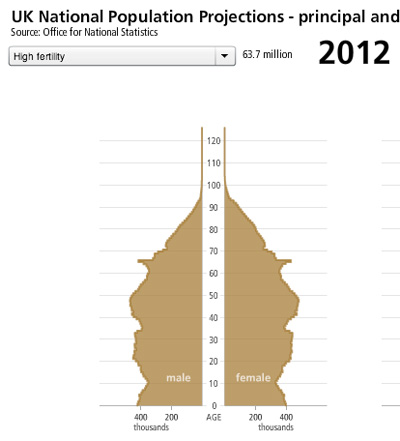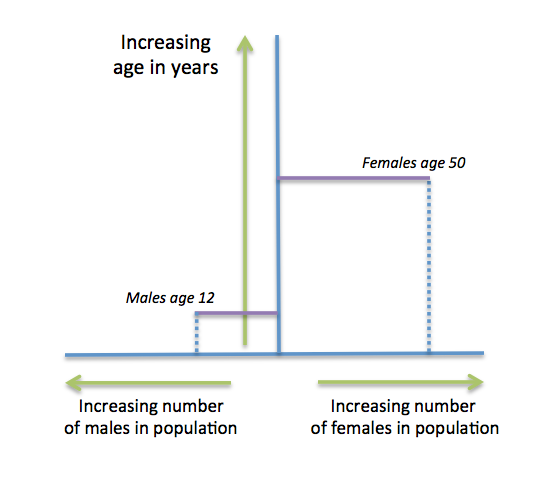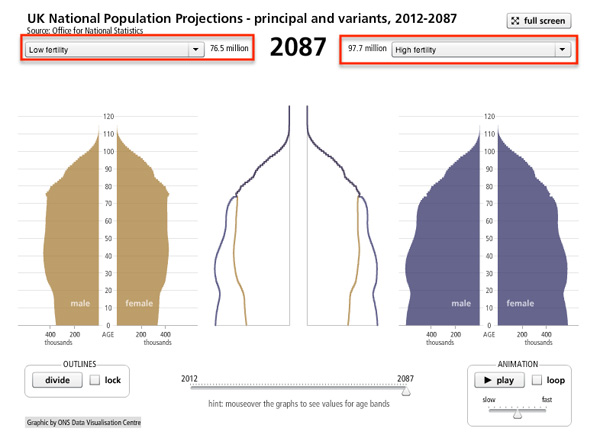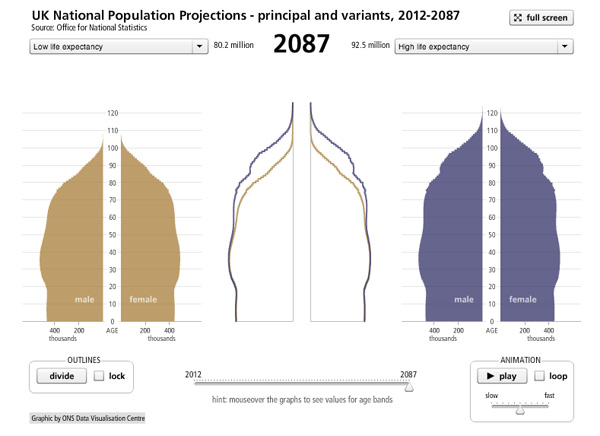In Don't Panic – The Truth About Population, Hans Rosling explained how the reduction in fertility rates (that is, the average number of children born per women in different countries of the world) will inevitably lead to a stabilisation in the total world population: if the average fertility rate is about two, and the proportion of women in the population is about a half (that is, 0.5), then the population will settle down to a relatively constant value...
...eventually...
...because as Hans Rosling showed, we are still in a period of population growth. With children around today who were born of higher fertility rates yet to reach maturity, the next few years will see more people being born each year than die each year.
Longer lifespans will also have an effect in the size of the population, though most notably in the size of the population over a certain age.
For example, recent projections by the Office of National Statistics (ONS) predict that the number of over 80s in the UK is set to double over the next 25 years.
But what of the fertility rate? How might that affect population size in just the UK?
The following chart is a particular sort of chart known as a population pyramid, taken from an interactive population projection application also released by the ONS.

The chart shows separately the make up of a population in terms of the number of males and the number of females of a given age at a particular point in time. Here's a guide on how to read the chart:

So let's look at an actual forecast. On the left, we see a prediction of population numbers in the UK in 2087 (75 years on from the original 2012 data that underwrites the model) based on a low fertility rate; on the right, we have a prediction based on a high fertility rate. The image in the middle shows the outline, or envelope of each prediction.

In particular, we see how whilst the size of the population above 75 years of age is the same (based on the original 2012 data moved 75 years into the future), the width of the lower part of the chart increases: we have large differences in the number of people aged below 75 as a result of the different fertility rate models.
When we add these numbers up, the contribution to the population from children born under the low fertility rate and the high fertility rate makes a significant difference to the overall projected population by 2087, 97.7 million compared to 76.5 million.
On the other hand, what happens if we compare high and low life expectancies? Can you predict the outcome? Remember, the starting point is data from 2012, and then we project forward 75 years.

As you might have guessed, this time the top part of the char is the part that is different, although this time the profile of the predicted populations starts to diverge around the age of seventy five.
Can you work out why? The fertility rate based model regulates the rate at which new people are introduced into the population starting in 2012; the life expectancy model regulates how people started to leave the population profile.
Maybe not surprisingly, the difference in effect on the overall predicted population size by 2087 is not as significant as it was for the different fertility rate models, 80.2 million for the low life expectancy model compared with 92.5 million for the high life expectancy.
If you click through to the ONS population projection interactive, you'll see that these charts are also very effective as the basis for animated data visualisations. You can also see the effects on population growth of high and low migration rates, as well making your own comparisons to test your assumptions and understanding of the models. How might a low fertility rate model compare with a high life expectancy model, for example, in terms of the overall predicted population profile for 2087?

Rate and Review
Rate this article
Review this article
Log into OpenLearn to leave reviews and join in the conversation.
Article reviews